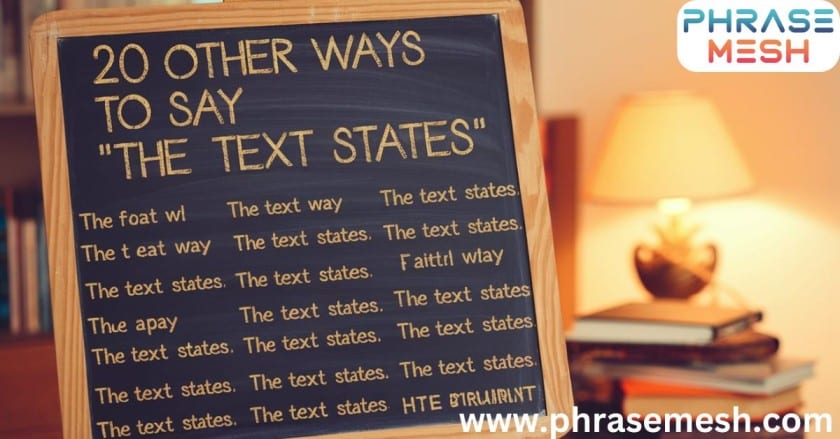Ever feel like you’re stuck in a rut, always using the same old phrase “the text states” when referring to written material? Don’t worry, you’re not alone. But here’s the good news: there are plenty of fresh, engaging alternatives that can breathe new life into your writing. Let’s dive into ten different ways to express this idea, complete with real-world examples that’ll help you see these phrases in action.
Is It Professional to Say “The Text States”?
No! Using “the text states” in professional writing can be a double-edged sword. While it’s a clear and straightforward phrase, it might come across as repetitive or unimaginative if overused. In formal academic or business contexts, it’s generally acceptable, but varying your language can enhance your writing’s sophistication and engagement. Consider this example from a business report:
Example:
“The quarterly report indicates a 15% increase in revenue. Furthermore, the text states that customer satisfaction has improved by 20% since last year.”
While not incorrect, using alternative phrases could make the writing more dynamic and professional.
Pros :
- Clarity: It’s a straightforward way to reference written material
- Universality: Easily understood across various professional contexts
- Objectivity: Maintains a neutral tone when presenting information
Cons :
- Missed Opportunities: Fails to convey nuances that other phrases might capture
- Repetitiveness: Can become monotonous if used frequently
- Lack of Sophistication: Might appear less polished than varied alternatives
What to Say Instead of “the text states”
Here are the 20 ways to say “the text states”:
- The passage indicates
- The document reveals
- The article mentions
- The source explains
- The paragraph highlights
- The text suggests
- The author writes
- The report points out
- The study shows
- The excerpt notes
- The narrative conveys
- The piece illustrates
- The content addresses
- The material presents
- The writing emphasizes
- The passage alludes to
- The literature demonstrates
- The excerpt underscores
- The prose reflects
- The account details
These alternatives offer a rich variety of options to keep your writing fresh and engaging. Each phrase brings its own nuance and can be used in different contexts to enhance the clarity and impact of your message. Remember to choose the one that best fits the tone and purpose of your writing.
1. The Passage Indicates
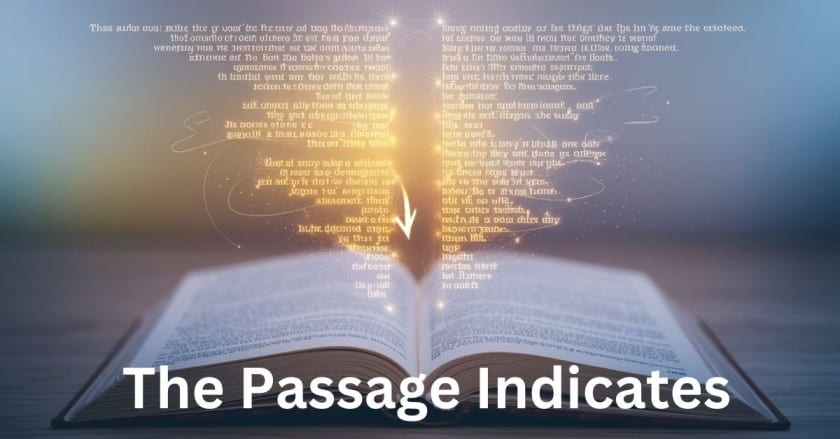
When you want to point out something that’s not explicitly stated but strongly implied, “the passage indicates” is your go-to phrase. It’s like reading between the lines.
Example scenario: Book club discussion
“In chapter three of ‘The Great Gatsby’, the passage indicates Gatsby’s obsession with Daisy without directly stating it. His constant glances towards her house and the tremor in his voice when he speaks of her paint a vivid picture of his feelings.”
2. The Document Reveals
Use this when you’re uncovering something significant or previously unknown. It’s perfect for dramatic effect or when discussing important findings.
Example scenario: Corporate memo
“Dear team,
I’ve just finished reviewing the quarterly report. The document reveals a 15% increase in customer satisfaction ratings across all departments. This is a testament to our new customer-first initiative. Great job, everyone!”
3. The Article Mentions
This phrase works well when you’re referencing a piece of information that’s part of a larger work but not necessarily its main focus.
Example scenario: Social media post
“Did you see the latest piece on climate change in National Geographic? The article mentions a new study showing that planting trees in urban areas can significantly reduce city temperatures. Maybe it’s time we start a neighborhood tree-planting project!”
4. The Source Explains
When you need to clarify or provide more detail about a topic, “the source explains” is a solid choice. It’s like having an expert break things down for you.
Example scenario: Academic paper
In her groundbreaking work on artificial intelligence, Dr. Samantha Chen delves into the ethical implications of AI decision-making. The source explains that as AI systems become more advanced, we must consider the potential biases inherent in their programming and the far-reaching consequences of their choices.
5. The Paragraph Highlights
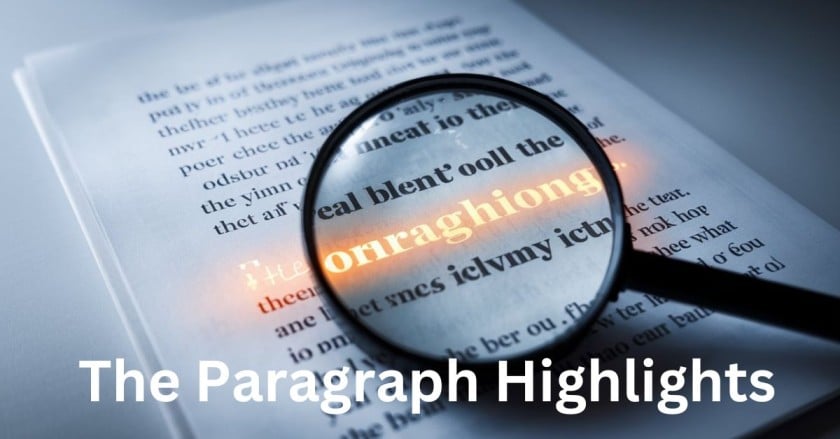
Use this when you want to draw attention to a specific section or point within a larger text. It’s like using a highlighter on the most important parts.
Example scenario: Legal briefing
“Your Honor, I’d like to direct your attention to page 17 of the contract. The paragraph highlights the defendant’s obligation to provide quarterly financial reports, which they failed to do for the past two years.”
6. The Text Suggests
This phrase is perfect for when you’re interpreting or inferring something from the material rather than quoting it directly. It’s a bit like reading tea leaves, but with actual evidence.
Example scenario: Literary analysis
“In Shakespeare’s ‘Hamlet’, the text suggests that Ophelia’s madness is not just a result of heartbreak, but also a commentary on the limited options available to women in that society. Her fragmented speeches and symbolic gifts of flowers hint at deeper societal issues.”
7. The Author Writes
When you want to directly attribute an idea or statement to the writer, “the author writes” is a clear and straightforward way to do it.
Example scenario: Book review
“In her latest novel, ‘Echoes of Tomorrow’, Sarah Johnson paints a vivid picture of a post-apocalyptic world. The author writes, ‘The sky, once blue, now bore the permanent scars of humanity’s folly, a sickly green that seemed to mock the very idea of hope.’ With prose like this, Johnson proves once again why she’s a master of speculative fiction.”
8. The Report Points Out
This phrase is great for emphasizing key findings or observations, especially in formal or technical documents.
Example scenario: Business presentation
“As we look at our market position for the coming year, the report points out that our main competitor is losing market share in the 18-25 demographic. This presents a unique opportunity for us to expand our reach and potentially capture a significant portion of this market.”
9. The Study Shows
When you’re dealing with research or scientific findings, “the study shows” is a powerful way to present factual information.
Example scenario: Health newsletter
“Attention coffee lovers! A recent study published in the Journal of Nutrition has some good news for you. The study shows that drinking three to five cups of coffee a day may lower the risk of several chronic diseases, including type 2 diabetes and heart disease. However, it’s important to note that these benefits come from black coffee, not your favorite sugar-laden Frappuccino!”
10. The Excerpt Notes
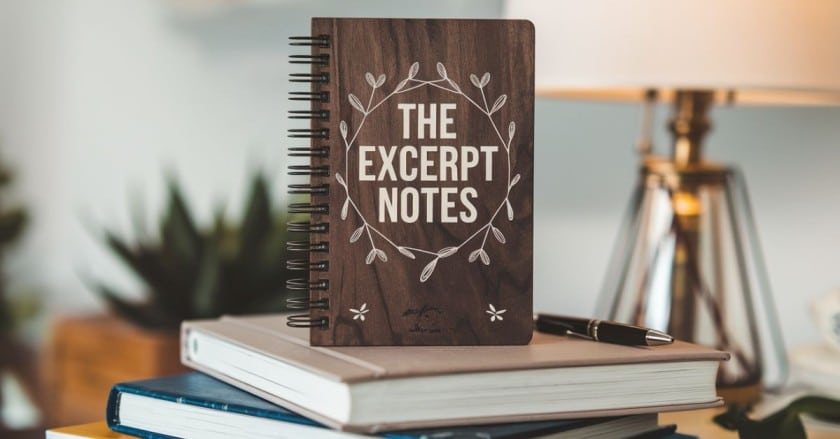
This phrase is perfect when you’re quoting or referencing a specific part of a larger text. It’s like zooming in on the most relevant bits.
Example scenario: History lecture
“Let’s turn our attention to Lincoln’s Gettysburg Address. The excerpt notes, ‘Four score and seven years ago, our fathers brought forth on this continent, a new nation, conceived in Liberty, and dedicated to the proposition that all men are created equal.’ These powerful words set the stage for one of the most influential speeches in American history.”
11. The Narrative Conveys
This phrase works well when discussing stories or descriptive passages, emphasizing how the text communicates ideas or emotions.
Example scenario: Film script analysis
“In the opening scene of ‘The Shawshank Redemption’, the narrative conveys Andy Dufresne’s inner turmoil without a single word of dialogue. The camera work and Tim Robbins’ nuanced performance speak volumes about his character’s state of mind.”
12. The Piece Illustrates
Use this when the text provides clear examples or paints a vivid picture of a concept or situation.
Example scenario: Art critique
“In her essay on Vincent van Gogh, the piece illustrates the artist’s profound influence on post-impressionism. Sarah Knowles writes, ‘Van Gogh’s bold brushstrokes and vivid colors didn’t just capture the world – they reimagined it, paving the way for generations of artists to come.'”
13. The Content Addresses
This phrase is useful when discussing how a text tackles or deals with a particular topic or issue.
Example scenario: Policy brief
“In the latest White House memorandum, the content addresses the pressing issue of climate change. It outlines a comprehensive plan to reduce carbon emissions by 50% within the next decade, signaling a significant shift in environmental policy.”
14. The Material Presents
Use this when introducing information or data provided by the text, especially in academic or professional contexts.
Example scenario: Scientific journal review
“Dr. Emily Chen’s groundbreaking paper on quantum computing is a must-read for anyone in the field. The material presents a novel approach to qubit stabilization that could potentially double the coherence time of quantum systems.”
15. The Writing Emphasizes
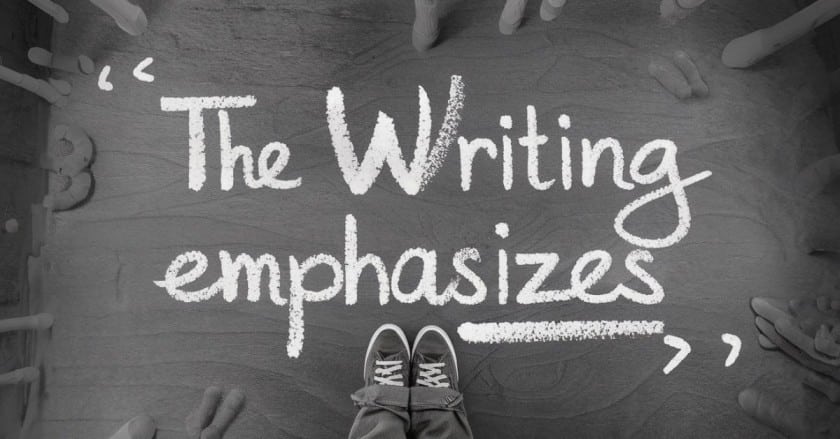
This phrase is perfect for highlighting the main points or recurring themes in a piece of writing.
Example scenario: Literary analysis
“Throughout ‘To Kill a Mockingbird’, the writing emphasizes the theme of innocence lost. Harper Lee’s portrayal of Scout’s gradual understanding of societal injustices serves as a poignant commentary on coming of age in the Deep South.”
16. The Passage Alludes To
Use this when the text makes indirect references or hints at something without explicitly stating it.
Example scenario: Political speech analysis
“In her inaugural address, the passage alludes to the nation’s troubled past without directly mentioning specific events. The phrase ‘the long arc of history’ subtly acknowledges past struggles while focusing on a hopeful future.”
17. The Literature Demonstrates
This phrase works well when discussing how a body of text proves or shows evidence for a particular point or theory.
Example scenario: Research paper
“In the field of positive psychology, the literature demonstrates a strong correlation between gratitude practices and overall well-being. Numerous studies, including Dr. Robert Emmons’ landmark work, show that regularly expressing thankfulness can significantly improve mental health.”
18. The Excerpt Underscores
Use this to draw attention to how a specific part of the text reinforces or emphasizes a particular point.
Example scenario: Legal document analysis
“On page 23 of the contract, the excerpt underscores the importance of confidentiality in this merger. It states, ‘Any breach of the non-disclosure agreement will result in immediate termination of the deal and potential legal action.’ This clause is crucial for protecting both parties’ interests.”
19. The Prose Reflects
This phrase is useful when discussing how the style or content of the writing mirrors certain ideas, emotions, or situations.
Example scenario: Book review
“In ‘The Road’ by Cormac McCarthy, the prose reflects the bleak, post-apocalyptic world it describes. The sparse punctuation and fragmented sentences create a sense of desolation that perfectly matches the story’s setting.”
20. The Account Details

Use this when the text provides a thorough or specific description of events, processes, or situations.
Example scenario: Historical document
“In his personal diary, the account details Napoleon’s thoughts on the eve of the Battle of Waterloo. He writes, ‘The air is thick with anticipation. Tomorrow, we shall write history.’ These words offer a rare glimpse into the mind of one of history’s most famous military leaders.”
Putting It All Together
By incorporating these additional phrases into your repertoire, instead of saying “The Text States” you’ll have even more tools at your disposal to make your writing dynamic and engaging. Remember, variety is the spice of life – and of good writing!
Whether you’re crafting an academic paper, writing a novel, or putting together a business report, these alternatives to “the text states” will help you reference written material with precision and style. They allow you to nuance your language and convey subtle differences in meaning, making your writing more sophisticated and impactful.
So, the next time you’re tempted to use “the text states,” challenge yourself to reach for one of these alternatives. Your readers will appreciate the freshness and clarity of your prose, and you’ll find yourself expressing ideas with greater accuracy and flair.
Happy writing!

